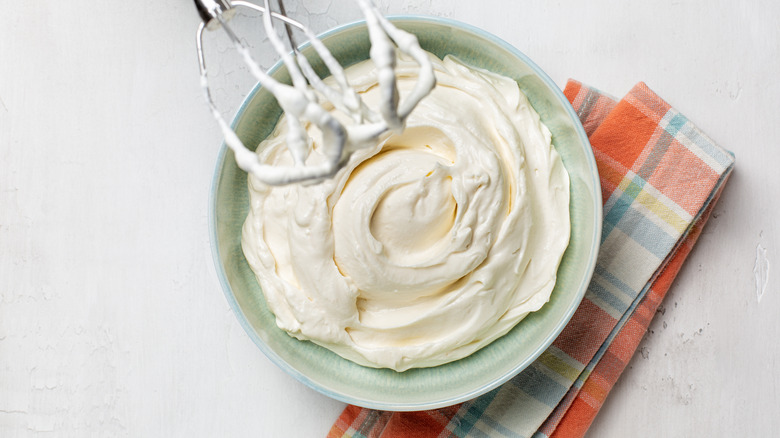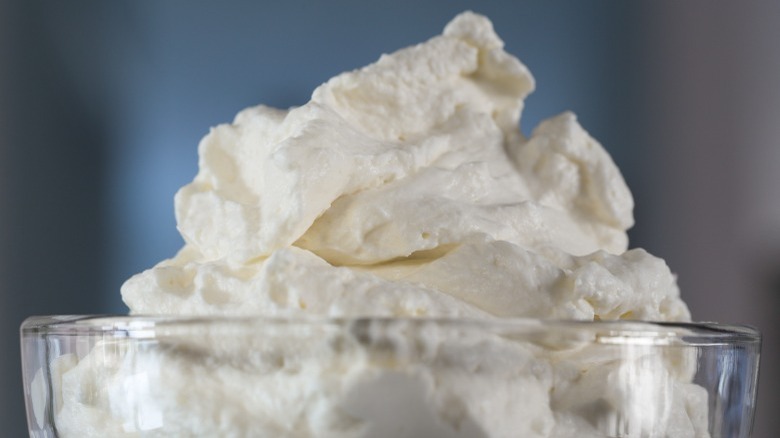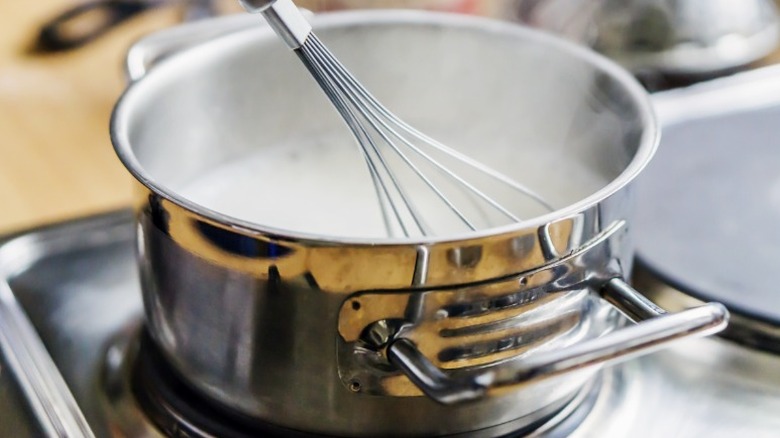Is Double Cream The Same As Heavy Whipping Cream?
The dairy section can sometimes be a confusing place with any number of milks and creams crowding the shelves. For example, cartons of cream can come with a variety of descriptors, from heavy whipping to double. But is there really a difference between the two?
Yes, double and heavy whipping (aka heavy) cream are distinct products, but they both start from un-homogenized milk. Cream comes from the layer of fat that forms on top of milk that is then skimmed before the dairy is further processed. On the other hand, double cream is created from cream that has been spun to separate the liquid from the fatty components. Double cream has a butterfat content of 48% whereas heavy cream is traditionally between 36% and 38%.
While heavy whipping cream is a staple on grocery store shelves in the United States, double cream is more commonly seen in Europe. For example, in the United Kingdom, double cream's thicker consistency creates a more luxurious end product, and it is used how heavy whipping cream is used in other parts of the world — whipped and piped as an accompaniment to desserts or poured around fruit and cakes (think strawberry shortcake or even basic scones).
How are heavy cream and double cream different?
Double cream's higher butterfat content makes it distinct from heavy cream and gives it its own set of ideal uses. With its smooth and velvety mouthfeel, fat enhances the richness of recipes to which it's added. When used in sweet dishes like custard, the extra fat in double cream will help you achieve a silken texture. Double cream can be whipped, but if you are going to do so, keep in mind that in over-whisking any type of cream, it may start to look grainy — or even turn into butter if you go too far. You can also create extra density and richness by heating and then quickly cooling double cream to create something like a spread that's perfect for toast.
Across the board, creams are used in soups and sauces to thicken them and add another layer of luxe flavor, and double cream is no exception. The higher the fat content in a cream, the less likely it is to separate or curdle when added to hot dishes, making double cream an excellent choice — especially in something like black truffle panna cotta. However, while many use cream to cut back on the bitterness of coffee, double cream is not a good substitute. When trying to stir it in, double cream will leave chunks of fat floating on top, which isn't the most appetizing way to drink one's morning brew.
When to substitute heavy cream for double cream
As double cream is more of a British staple, heavy cream is the substitute of choice for many recipes. Its lower fat content means that the resulting dish won't always be as rich; however, this difference most likely won't be noticeable in the majority of recipes.
In desserts goods that call for double cream, like a custard or pudding, heavy cream can be used in its stead. On the other hand, if your recipe includes whipping the cream, heavy cream does not have the same fat content and may not be quite as stable — however, a little Greek yogurt will fix that. There is also the potential that the difference in fat could cause a number of issues — including the ability of a baked good to rise and a reduction in the resulting moisture levels.
Generally, if a savory recipe calls for heavy cream as a liquid, you should be able to sub in double cream without much issue. But, if you're going to exchange heavy cream for double cream in a hot dish, you'll have to keep a closer eye on the temperature, as the cream could curdle if too hot. This becomes even more of a risk if your sauce contains an acid that will lower its pH, like tomato. To counteract the potential curdling, you can temper the dairy or add starch like flour or cornstarch to stabilize the liquid.



